JUMP TO SECTION
Future of Hiring
AI in Recruiting: How Artificial Intelligence Is Transforming Talent Acquisition
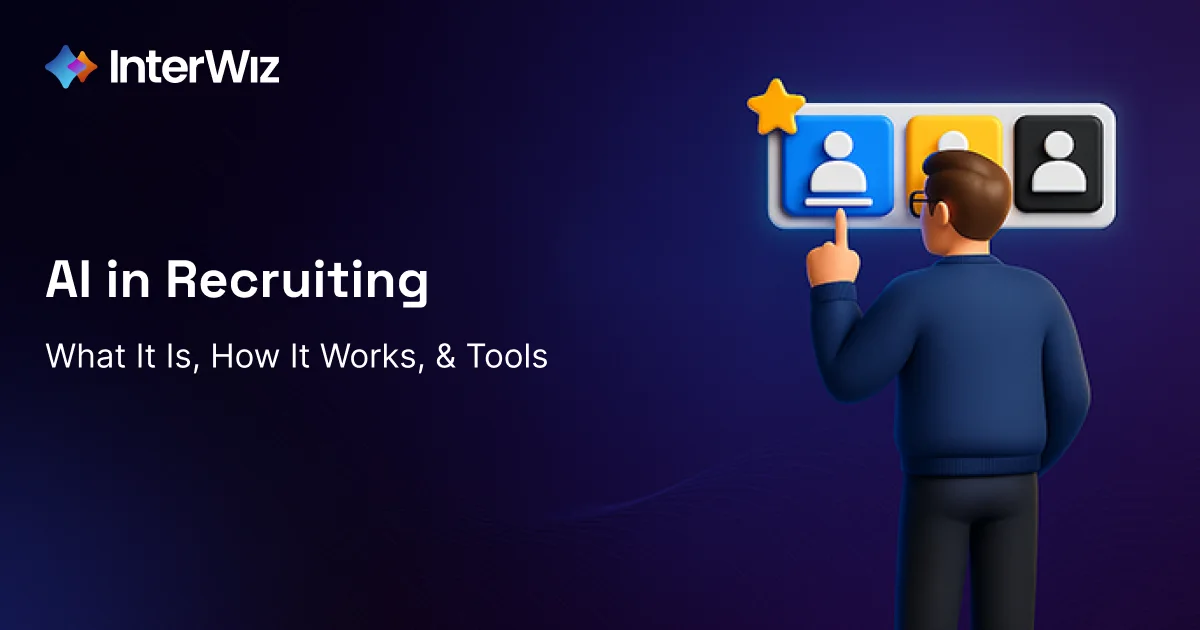
Most hiring teams today aren’t limited by a lack of applicants, they’re constrained by outdated, manual processes that can’t scale. Reviewing resumes one by one, juggling interview logistics, and relying on gut instinct leads to delays, missed talent, and inconsistent decisions.
AI in recruiting solves these problems at the system level. By automating repetitive tasks and applying data-driven intelligence to candidate evaluation, AI enables faster, fairer, and more informed hiring, without removing the recruiter from the equation.
AI is now actively reshaping every stage of the hiring funnel: sourcing candidates, matching them to roles, conducting structured interviews, scoring assessments, and forecasting performance. But adoption isn’t just about plugging in new tools; it raises strategic questions around compliance, bias, platform selection, and candidate trust.
This guide answers all of that. You'll learn how AI is reshaping recruiting workflows, which tools are leading the space, what risks to watch for, and how to evaluate solutions based on your hiring goals.
Key Takeaways
AI is transforming recruiting across the entire hiring funnel, from sourcing and screening to structured interviews and scoring.
This guide explains how AI works in real-world recruiting workflows, which tools lead the market, and how to choose the right platform.
It also covers legal, ethical, and operational considerations teams must address to adopt AI responsibly and effectively.
What Is AI in Recruiting, and Why It’s More Than Just Automation
AI in recruiting refers to the application of technologies like machine learning, natural language processing (NLP), and predictive analytics across the hiring funnel. These systems don’t just automate tasks; they help recruiters extract insights from data that were previously invisible or too complex to act on at scale.
For example:
NLP interprets and structures unstructured data from resumes, cover letters, or interviews.
Machine learning identifies patterns in past hiring outcomes to rank and prioritize candidates.
Predictive models forecast which applicants are most likely to succeed or stay long term.
Recruiting today isn’t broken, but it’s slow, inconsistent, and often biased. AI is changing that, not by replacing recruiters, but by giving them better tools to make faster, fairer, and more accurate hiring decisions.
These tools are already reshaping workflows. AI now screens resumes, shortlists applicants, recommends matches, schedules interviews, and even powers skill-based assessments, all with greater speed and consistency than human teams working manually.
The result: less time wasted on administrative tasks, fewer subjective decisions, and more bandwidth for recruiters to focus on high-impact conversations with top candidates.
Where AI Fits in the Recruiting Funnel
AI doesn’t just improve one part of recruiting; it enhances every stage of the funnel, from sourcing to final selection. Here's how:
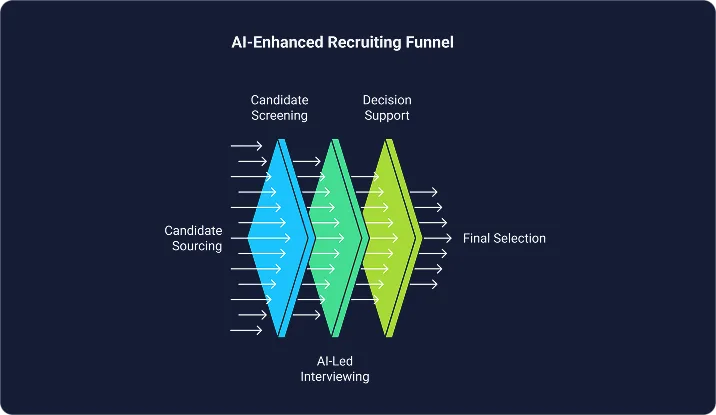
Sourcing: AI platforms automatically scan job boards, databases, and social profiles to identify both active and passive candidates. Some tools can even write and personalize outreach messages at scale.
Screening: AI parses resumes, ranks candidates based on job requirements, and flags high-potential applicants. It also removes manual biases by focusing on structured data over subjective impressions.
Interviewing: AI-led interview platforms like InterWiz conduct structured screening and in-depth interviews. These systems assess soft skills, technical ability, and communication with standardized, bias-resistant scoring.
Decision Support: Predictive analytics models synthesize candidate scores, past hiring data, and job performance indicators to guide final hiring decisions. AI also helps visualize key trends in the talent pool through dashboards and reports.
The result is a recruiting process that’s faster, fairer, and far more scalable, especially for companies struggling with resume overload or inconsistent interviews.
AI Recruiting vs. Traditional Hiring: What’s the Difference?
Recruiters today face a critical choice: maintain traditional hiring processes or adopt AI to drive smarter, faster decisions. The difference between the two is more than just automation; it’s about capability, scale, and consistency.
Traditional recruiting is manual, reactive, and highly dependent on individual judgment. Recruiters often sift through hundreds of resumes, schedule interviews one by one, and make decisions based on fragmented impressions or gut feelings. While this approach allows for personal interaction, it struggles to scale and is prone to delays, missed talent, and unconscious bias.
AI recruiting, by contrast, is data-driven, structured, and optimized for both speed and accuracy. It automates repetitive tasks like resume screening and interview scheduling, while providing deeper insights into candidate fit using historical data, predictive models, and structured assessments.
Below is a side-by-side comparison:
Aspect | Traditional Hiring | AI Recruiting |
Resume Screening | Manual filtering, time-consuming | AI parses and ranks resumes in seconds |
Candidate Evaluation | Subjective, varies by recruiter | Standardized scoring across soft, technical, and behavioral traits |
Interview Scheduling | Requires back-and-forth coordination | Automated with AI scheduling tools |
Bias & Fairness | Prone to unconscious bias | Reduced through objective data and standardized assessments |
Scalability | Hard to scale for high-volume hiring | Designed for speed and consistency at scale |
Decision Support | Based on the recruiter's memory or intuition | Informed by analytics and predictive models |
AI doesn’t eliminate the recruiter’s role; it enhances it. By removing the manual noise, recruiters can focus on building relationships, evaluating top candidates more deeply, and shaping hiring strategy.
Top Four Use Cases of AI in Recruiting
AI’s impact on recruiting isn’t theoretical; it’s operational. From sourcing to candidate evaluation, AI is actively solving bottlenecks that traditional hiring methods struggle to overcome.
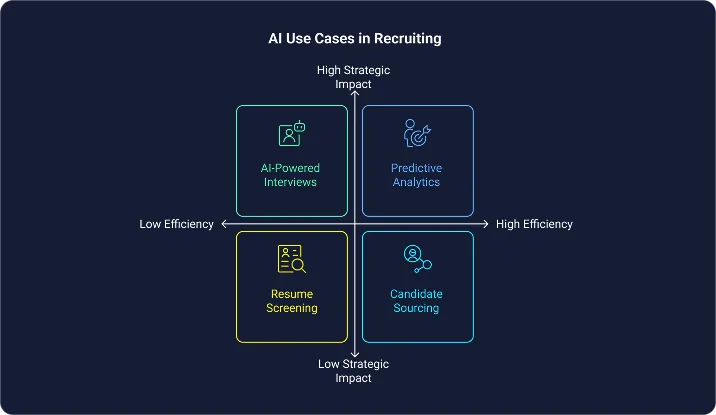
Let’s break down where AI delivers the most strategic value in real-world recruiting workflows.
1. Resume Screening and Candidate Matching
Resume screening is where hiring bottlenecks often begin. Recruiters spend hours filtering applications, but valuable candidates are still overlooked, often due to formatting inconsistencies or missed keyword matches.
AI eliminates this inefficiency by using natural language processing (NLP) to interpret and structure unstructured resume data. It identifies skills, roles, achievements, and contextual markers like progression or project ownership. From there, machine learning models compare this data against job descriptions to rank candidates based on both hard and soft requirements.
Crucially, advanced AI tools apply semantic understanding; they don’t just match keywords; they recognize related concepts (e.g., "React" as part of the "JavaScript ecosystem").
This structured, skills-first matching dramatically increases the consistency and quality of shortlists, especially in high-volume or technical hiring environments.
2. AI-Powered Interviews and Assessments
Manual interviews are slow to schedule, hard to standardize, and often susceptible to unconscious bias. Worse, they rarely scale.
AI-led interview platforms are redefining how candidates are evaluated, with speed, structure, and objectivity at the core. These systems automate both the delivery and scoring of interviews, enabling on-demand evaluations across time zones and roles.
InterWiz, for example, conducts structured screening and in-depth interviews tailored to the role, analyzing communication style, problem-solving ability, technical knowledge, and personality traits. It also allows hiring teams to set weightage across different test types, ensuring alignment with job priorities.
By standardizing how candidates are assessed and giving recruiters data to justify each decision, AI interviews increase both fairness and hiring accuracy without slowing down the process.
3. Candidate Sourcing and Talent Pipelines
Even the best evaluation tools are useless without a strong talent pipeline. AI transforms sourcing from a reactive chore into a proactive advantage.
Modern tools now use AI to scan job boards, resume databases, company websites, and public profiles to surface qualified candidates, including passive ones who may not be actively applying. These systems factor in role fit, job history, skill evolution, and even industry relevance.
Advanced platforms can also personalize outreach at scale, generating messages tailored to candidate profiles and engagement signals. This turns cold outreach into high-conversion interactions.
For companies hiring in niche domains or at high velocity, AI-powered sourcing removes much of the guesswork and manual grind from talent discovery.
4. Predictive Analytics for Hiring Decisions
Even with strong candidates in the funnel, final hiring decisions often come down to hunches. That’s where predictive analytics closes the gap between intuition and evidence.
By analyzing data from past hires, including performance, retention, and feedback, AI models forecast how likely a candidate is to succeed or stay in a given role. These insights help recruiters compare equally qualified candidates with greater clarity, especially when evaluating long-term fit.
Some platforms generate risk profiles or success likelihood scores, which hiring managers can use to guide discussions and reduce costly mis-hires.
This doesn’t replace recruiter judgment; it sharpens it. The best hiring decisions aren’t made by instinct or data alone, but by combining both intelligently.
Four Best AI Recruiting Platforms for Modern Hiring Needs
Today’s recruiting challenges demand more than automation; they require tools that enhance decision quality, reduce friction, and scale human judgment. From sourcing to interviews, AI tools now cover almost every stage of the hiring funnel. Below are four standout tools that address distinct hiring needs with intelligence and precision.
1. SeekOut - AI Talent Sourcing with a Diversity Edge
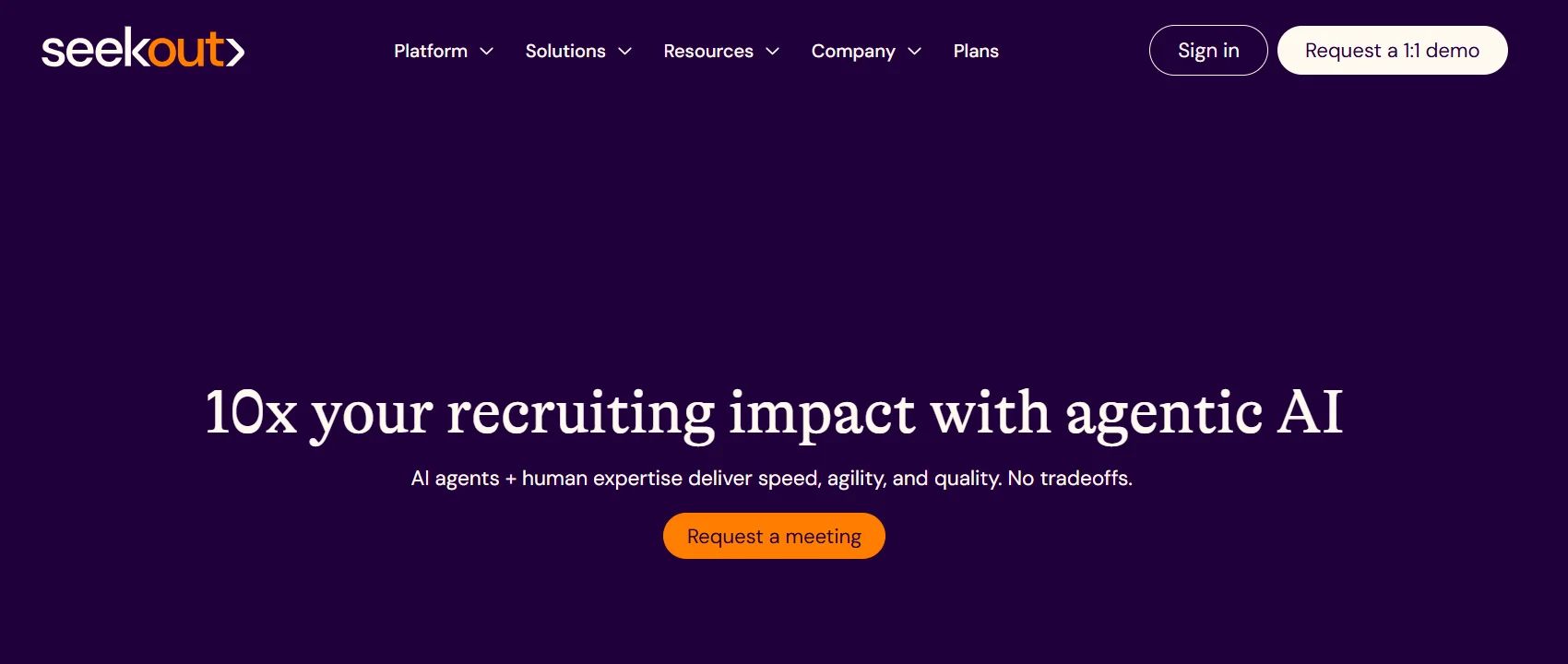
SeekOut helps recruiters build deeper, more inclusive talent pipelines. Using AI, it scans millions of public profiles, internal databases, and social networks to surface high-fit candidates, including passive talent often missed by traditional search methods.
Key capabilities include skill-based search filters, Boolean optimization, and DEI-focused sourcing insights. Recruiters can refine searches by experience, background, or technical expertise, making it ideal for filling hard-to-source roles in engineering, healthcare, or executive domains.
2. Eightfold AI - Talent Intelligence for Matching and Internal Mobility
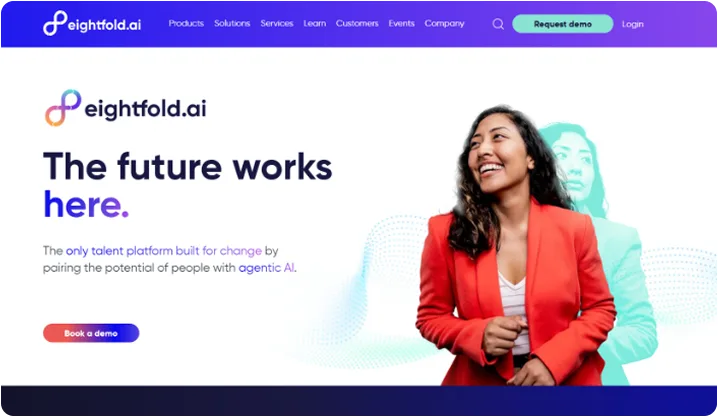
Eightfold AI goes beyond resume screening. It applies deep-learning models to analyze career trajectories, skill adjacencies, and performance predictors, helping companies not only match candidates to jobs but also uncover internal talent ready for advancement.
It’s particularly useful for large enterprises managing external hiring, internal mobility, and succession planning from a single system. Organizations also use Eightfold to reduce bias by making selection criteria more skills and performance-based.
3. InterWiz - AI Interviewer for Accurate, Bias-Free Hiring
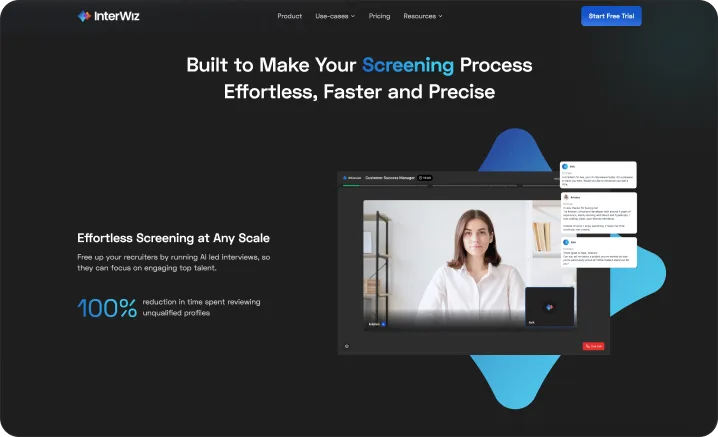
InterWiz specializes in one of the most critical and often overlooked stages of recruiting: the interview. Its platform conducts AI-led interviews that evaluate soft skills, technical knowledge, and behavioral traits through structured, role-specific assessments.
Recruiters can create fully customizable interview flows, apply weightage to different evaluation criteria, and access detailed candidate reports with ranking, scoring, and insight breakdowns. InterWiz is especially suited for scaling structured interviews across engineering, customer support, and operations roles, without compromising fairness or depth.
If your team struggles with inconsistent interviews, scheduling bottlenecks, or unstructured evaluations, InterWiz offers a strategic advantage.
4. HireVue - Video Interviews and Scalable Assessments
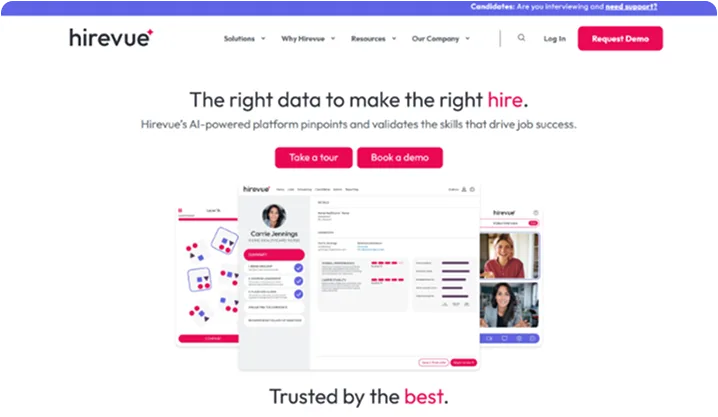
HireVue has long been a leader in AI-powered interviewing. It combines asynchronous video interviews with game-based assessments and predictive scoring to evaluate candidate readiness.
What makes HireVue stand out is its video analysis layer, which captures behavioral signals, tone, and response quality, helping recruiters identify top candidates faster, especially for entry-level, customer-facing, or high-volume roles.
For organizations looking to replace phone screens or reduce recruiter load in early-stage evaluation, HireVue is a mature, battle-tested option.
How to Choose the Right AI Recruiting Platform
With dozens of AI recruiting tools on the market, from resume screeners to full-suite hiring platforms, selecting the right solution can feel overwhelming. The key is to align the platform’s capabilities with your team’s needs, workflow complexity, and scale of hiring.
This section provides a focused decision-making guide to help recruiting teams evaluate AI platforms based on what actually matters: performance, integration, fairness, and fit.
Key Evaluation Criteria
When evaluating AI recruiting tools, prioritize platforms that go beyond automation and deliver insight, interoperability, and accountability.
Here are the core features that matter:
ATS Integration: Ensure the platform integrates natively with your applicant tracking system (ATS). Poor integration leads to duplicated effort and fragmented data.
Customization & Role-Specific Assessments: Look for tools that allow you to tailor interview templates, scoring rubrics, and evaluation weightage to match different job types and seniority levels.
Candidate Analytics & Reporting: The best AI tools offer dashboards that track candidate performance, funnel conversion rates, and quality-of-hire metrics, essential for ongoing optimization.
Fairness & Bias Audits: Compliance is no longer optional. Choose vendors that provide transparency into how their models work, offer audit logs, and comply with regulations like NYC Local Law 144 or the EEOC’s AI guidance.
Scalability & Support: Whether you're hiring 10 or 10,000 people per year, your tool should be able to scale and provide support when configurations get complex.
Also read: 25 Best HR AI Tools for Every Team: Sourcing, Interviewing, Onboarding & Beyond
Benefits of Using AI in the Recruitment Process
AI isn’t just changing how we recruit; it’s improving the outcomes. By shifting time away from admin tasks and toward decision-making, AI allows recruiting teams to operate with greater speed, precision, and impact. Below are the most tangible benefits organizations are seeing from AI-powered hiring.
Speed and Productivity
Recruiting workflows are notoriously time-intensive. Scheduling interviews, screening resumes, and sending reminders - these tasks drain recruiter bandwidth without adding strategic value.
AI removes this friction. It handles resume parsing in seconds, auto-schedules interviews based on calendar availability, sends reminders, and even initiates assessments, all without human intervention.
This automation gives recruiters back the hours they need to focus on high-touch interactions: engaging top candidates, refining role requirements with hiring managers, or improving employer branding.
According to a report by Ideal, companies using AI screening tools have seen a 35–40% reduction in time-to-hire, especially in high-volume and entry-level roles.
Enhanced Quality of Hire
Hiring fast is meaningless if the wrong person is selected. AI not only speeds up the process, but it also improves the quality of hiring decisions.
By using structured scoring, skills-based evaluations, and data-informed predictions, AI reduces reliance on gut feel or first impressions. Interview and assessment tools like InterWiz allow recruiters to evaluate candidates across technical, behavioral, and cognitive dimensions, applying consistent criteria across all applicants.
This creates a more level playing field for candidates and helps ensure the right person is hired for the right role, not just the one with the best resume formatting or most charisma in an interview.
The result? Stronger long-term performance, fewer mis-hires, and better alignment with role requirements.
Cost Reduction
Recruiting is expensive, not just because of job ads and recruiter salaries, but because of time lost, candidate drop-off, and poor hires.
AI reduces cost-per-hire in two key ways:
Time savings: Automating sourcing, screening, and scheduling reduces recruiter hours spent per hire.
Improved outcomes: Better matching and prediction lower early attrition and reduce the need to re-hire for the same role.
A Deloitte study found that organizations using AI in their hiring process reported up to 30% lower cost-per-hire compared to traditional workflows, a figure that scales significantly across large or fast-growing teams.
In tight hiring markets or lean teams, these savings translate into higher ROI and more sustainable talent acquisition operations.
Also read: Artificial Intelligence in HR: How AI is Reshaping Human Resources
Limitations and Ethical Considerations of Using AI in the Recruitment Process
AI recruiting tools offer speed, scale, and consistency, but they’re not without trade-offs. As these systems take on greater influence in hiring decisions, concerns around fairness, privacy, and transparency become more than technical issues; they’re ethical imperatives.
Recruiters and HR professionals must balance innovation with responsibility. Here are the key legal and ethical limitations to consider when implementing AI in hiring.
Data Privacy and Compliance Risks
AI recruiting systems process sensitive personal data, resumes, video interviews, voice recordings, and assessments, which makes data protection and legal compliance critical.
In the EU, the General Data Protection Regulation (GDPR) mandates that candidates be informed of how their data is collected, used, and stored. It also grants them the right to request human review if decisions are made solely by automated systems.
In the U.S., regulations are beginning to emerge. New York City’s Local Law 144, which came into effect in 2023, requires organizations using automated employment decision tools (AEDTs) to:
Conduct bias audits
Notify candidates that AI is being used
Provide details on what data is being analyzed and why
At the federal level, the EEOC (Equal Employment Opportunity Commission) has released guidance warning employers against AI tools that may produce discriminatory outcomes under Title VII or the ADA.
Companies using AI in hiring must work closely with legal and compliance teams, not just to avoid penalties, but to protect candidate rights and brand trust.
Bias in AI Algorithms
One of the promises of AI in recruiting is reduced bias, but that depends entirely on how the algorithms are trained.
If AI systems are built using historical hiring data that reflects biased decisions, they can reinforce, rather than reduce, inequalities. For example, a model trained on past resumes may learn to favor male-coded language or penalize career gaps, even if unintentionally.
This “garbage in, garbage out” problem isn’t theoretical. Multiple studies and lawsuits have shown that algorithmic bias in hiring can disproportionately affect women, people of color, or candidates from non-traditional backgrounds.
To mitigate this, companies must:
Conduct regular fairness audits using independent datasets
Use explainable AI models that show how decisions were made
Build feedback loops that flag and correct bias in real time
AI isn’t inherently neutral; it reflects the data it's given. Human oversight is essential to keep these tools accountable and equitable.
Candidate Trust and Transparency
Even if a tool is compliant and unbiased, candidates may still feel uncomfortable being evaluated by an algorithm, especially when decisions are opaque.
Excessive automation, such as no human interviews, unclear scoring criteria, or fully AI-generated rejection emails, can reduce candidate trust and create a perception of cold, impersonal hiring.
To preserve trust:
Clearly communicate when and how AI is used in the process
Offer human touchpoints at key stages (e.g., final interviews, offer discussions)
Give candidates access to feedback or reasoning behind outcomes when possible
Trust is a two-way street. Recruiters must not only use AI ethically, but they must also ensure candidates feel seen, respected, and informed throughout the journey.
Bottom Line: AI in Recruitment
AI is reshaping recruiting, not by replacing humans, but by removing inefficiencies, reducing bias, and delivering faster, data-driven decisions. When implemented thoughtfully, AI tools help hiring teams focus on what matters most: evaluating talent fairly, scaling smarter processes, and hiring with confidence.
The key is to choose platforms that align with your team’s goals, remain compliant with evolving regulations, and balance automation with transparency and human judgment. Used right, AI won’t just streamline your hiring, it will elevate it.
FAQs about AI in Recruiting
Does AI eliminate human recruiters?
No, AI does not eliminate human recruiters. AI supports recruiters by automating repetitive tasks like resume screening, scheduling, and basic assessments. Human recruiters remain essential for decision-making, relationship-building, and managing candidate experience.
Is AI legal in hiring?
Yes, AI is legal in hiring when used in compliance with relevant laws. Employers must follow regulations such as the EEOC guidelines in the U.S., the GDPR in the EU, and local laws like New York City’s Local Law 144. These laws require transparency, bias audits, and candidate notification when AI is used in hiring decisions.
Can AI interview candidates fairly?
Yes, AI can interview candidates fairly when built and monitored correctly. Fairness depends on using unbiased training data, regular audits, transparent scoring methods, and maintaining human oversight in the evaluation process.
How does AI rank or score candidates?
AI ranks or scores candidates by analyzing factors such as skills, experience, education, test performance, and interview responses. It uses machine learning models to compare candidate data against job requirements and past hiring outcomes. Scoring is typically based on predefined criteria and may include weighted scores for technical skills, communication, and cultural fit.
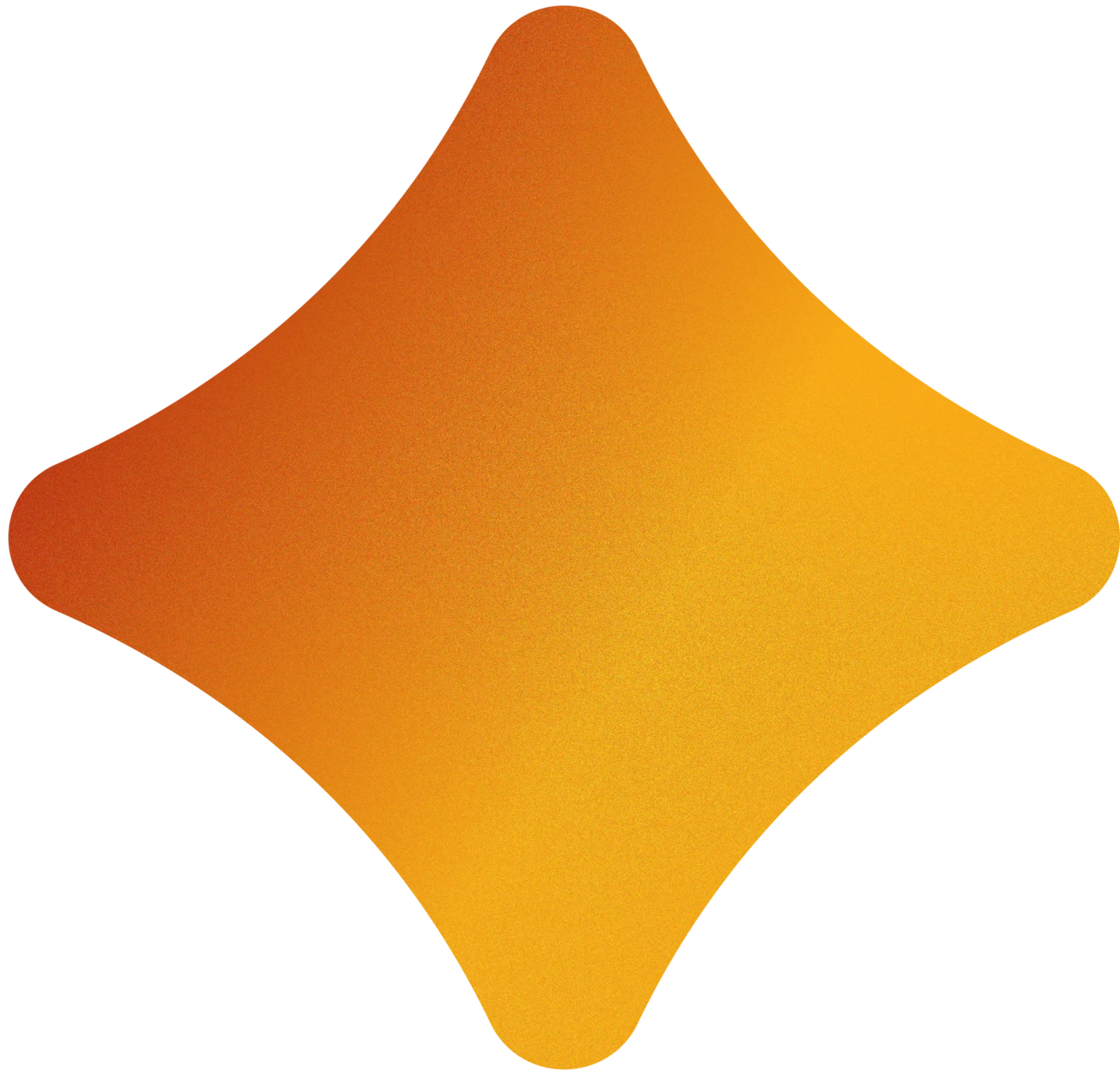
High Quality Screening with AI Interviews
Automated interviews built for speed, scale, and accuracy.
🔥 Full features, no credit card required.